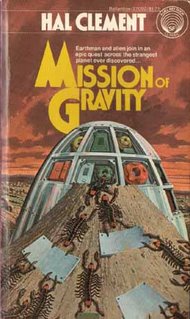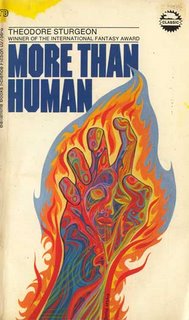Handmade Star Wars
“He wallowed in Mark Twain and Melville; I knew he was startled by Dostoevski, and amused by the thin wind of fallacy that blew through the unsanitary beard of Marx.”
Quite the opposite of Hal Clement’s writing, Edgar Pangborn’s (1909-1976) writing comfortably fits within the soft or social sf camp. A painter and composer in addition to being a writer, Pangborn is relatively forgotten now. However, before his literary devotee Ursula K. Le Guin was churning out novels lacing scientific exploration with emotion, he was paving the way for the New Wave. His work is decidedly literary, slow moving, and filled with grand ideas. A Mirror for Observers, for instance, is no less than the chronicling of social shepherds fighting genocidal mania. Yikes!

The novel is basically comprised of two sections, both collections of missives written by a Martian named Elmis who is living among humans and battling another Martian named Namir for control over the direction of Angelo Pontevecchio, a young genius living in a rough section of Latimer, MA. Martians (who refer to themselves as “Salvayans”) abandoned their planet 30,000 years ago when it became uninhabitable. Since then, they’ve acted as Observers of human culture and history here on Earth. That is until recently, when Namir and a group referred to as “Abdicators” broke away from the Observers. They’ve concluded that humans are nasty apes who might as well kill themselves off and allow the Salvayans to take control of the Earth’s surface. The Salvayans, by the way, have lived all these years in interconnected subterranean cities spread across the globe.
Elmis shows up as a boarder at young Angelo’s house. He’s had a little plastic surgery (to make him look human), and he’s going by the name Benedict Miles, a Canadian ex-pat working on a book. He introduces Angelo to the literature of ethics and the ideas of the beautiful life. Miles/Elmis is, among other things, a great lover a music, which leads him also to befriend a young piano prodigy named Sharon. But Angelo is confused, and he falls too often under the influence of a young punk and gang leader named Billy Kell (who happens to have a close relationship with…you guessed it, Namir the Abdicator). After a street war, Angelo disappears and Elmis spends years looking for him.
Part two. Angelo is a grown man who goes by the name “Abraham Brown.” He’s still under the influence of William “Billy” Kell. William is part of a neo-fascist group known as the Organic Unity Party. I don’t need to tell you that Namir is involved. There’s also a scientist working on pandemic-producing chemical warfare, a suicide, and a grown up Sharon bringing down the house with her piano recitals.
Pangborn grew up surrounded by writing. His mother, Georgia Wood Pangborn, was a successful writer of ghost stories. And while I was a little disturbed by Elmis’ relationship with Sharon and an overall strange description of children by Pangborn (“That March day was like a little girl fresh out of her bath, cool, sweet, ready for mischief.”), the novel is intensely thought provoking and another example that sf is a diverse form of literature and more than the picture drawn by detractors: base escapism meant for children, with no literary merit.
“I want to know why a fire glows, and why flame dust kills. I want my children or theirs, if I ever have any, to know what makes that radio work, and your tank, and some day this rocket. I want to know much--more than I can learn, no doubt.”

Clement is a world builder. His creation in MG is a large planet called Mesklin. Mesklin is shaped like a very wide but quite short top. And like a top, it spins quickly. A Mesklin day lasts about 18 minutes. The shape of the planet and the speed of its rotation also create variable gravity on the planet. At the equator, Mesklin’s gravity is about three times that of earth. At the poles, somewhere around 700 times. Before the novel begins, an important human research vessel crashes near one of the poles and human Charles Lackland has made contact and developed a limited relationship with a Mesklinite trader ship captain named Barlennan. Mesklinites look much like centipedes. They’re also instilled with a deep fear of falling (mere inches at the poles could be fatal).

Though he was also a painter (under the name “George Richard”), Clement was trained in science, and he spent most of his life as a high-school science teacher. Perhaps this explains why his dialogue and character development are wooden. Really, the narrative seems often to exist solely to give structure to Clement’s scientific points. But that’s not to say the novel isn’t enjoyable. In fact, the journey of these strange centipedes is oddly compelling, and I think Joseph Campbell would have been proud of Clement’s presentation of the hero’s journey. But as Peter Nicholls once said, the reader is introduced to these fantastic and believable creatures from another world, and then they open their mouths and “sound exactly like Calvin Coolidge.” Fascinating Calvin Coolidges though I must add.

“Does a superman have super-hunger, Gerry? Super-loneliness?”


